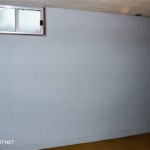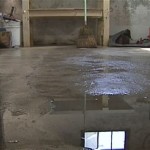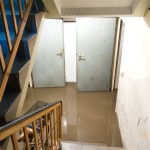How to Remove Efflorescence From Basement Walls
Efflorescence, the white powder deposits that appear on basement walls, is a common nuisance for homeowners. It's caused by salts that are dissolved in water, which migrate to the surface of the wall as the water evaporates. These salts can come from a variety of sources, including the soil around your home, the concrete itself, or even the mortar used to hold the bricks or blocks together.
While efflorescence is not typically a structural problem, it can be unsightly and can even damage your basement walls if it is not treated. Fortunately, there are a few simple steps you can take to remove efflorescence from your basement walls.
1. Identify the Source of the Moisture
The first step to removing efflorescence is to identify the source of the moisture that is causing it. This can be a bit challenging, since there are many different possible sources of moisture in a basement. However, there are a few common places to look:
- Cracks in the foundation: Any cracks in the foundation of your home can allow water to seep in, which can then lead to efflorescence.
- Leaking pipes: Leaking pipes are another common source of moisture in basements. Check all of the pipes in your basement for any signs of leaks, and repair any leaks that you find.
- Condensation: Condensation can occur when warm, humid air comes into contact with a cold surface. This can happen in basements, especially during the summer months. To reduce condensation, try to keep the humidity level in your basement low by using a dehumidifier.
2. Clean the Walls
Once you have identified the source of the moisture, you can clean the walls to remove the efflorescence. There are a few different ways to do this, but the most effective method is to use a solution of muriatic acid and water. Muriatic acid is a strong acid, so it is important to follow the directions on the label carefully. To clean the walls, simply mix one part muriatic acid with four parts water. Apply the solution to the walls with a sponge or brush, and let it sit for a few minutes. Then, rinse the walls thoroughly with clean water.
3. Seal the Walls
Once the walls are clean, you need to seal them to prevent moisture from seeping in again. There are a few different types of sealers that you can use, including epoxy sealers, latex sealers, and silicone sealers. Choose a sealer that is specifically designed for use on basement walls, and follow the directions on the label carefully.
4. Fix the Source of the Moisture
Once you have sealed the walls, you need to fix the source of the moisture that is causing the efflorescence. This may involve repairing any cracks in the foundation, fixing any leaks in the pipes, or reducing the humidity level in the basement. By fixing the source of the moisture, you can prevent the efflorescence from coming back.
5. Prevent Future Efflorescence
Once you have removed the efflorescence and fixed the source of the moisture, you can take a few steps to prevent future efflorescence from occurring. These steps include:
- Keeping the basement dry: The best way to prevent efflorescence is to keep the basement dry. This means fixing any leaks, using a dehumidifier, and ventilating the basement to reduce the humidity level.
- Sealing the walls: Sealing the walls with a防水 sealer will help to prevent moisture from seeping in and causing efflorescence.
By following these steps, you can remove efflorescence from your basement walls and prevent it from coming back.

How To Remove Efflorescence Easily Full Tutorial Youtube

Efflorescence Tar Heel Basement Systems

Cleaning Efflorescence Ways To Get Powder Off Basement Walls

What To Do About Efflorescence Or Stained Concrete Basement Walls

Removing Efflorescence From Walls The Money Pit
Removing Efflorescence From Basement Walls Diy Home Improvement Forum

How To Remove Efflorescence From Basement Walls Hunker

Efflorescence On Concrete Removal Weinstein Retrofitting

Cleaning Efflorescence Ways To Get Powder Off Basement Walls

Efflorescence Tips And Tricks Youtube
See Also








